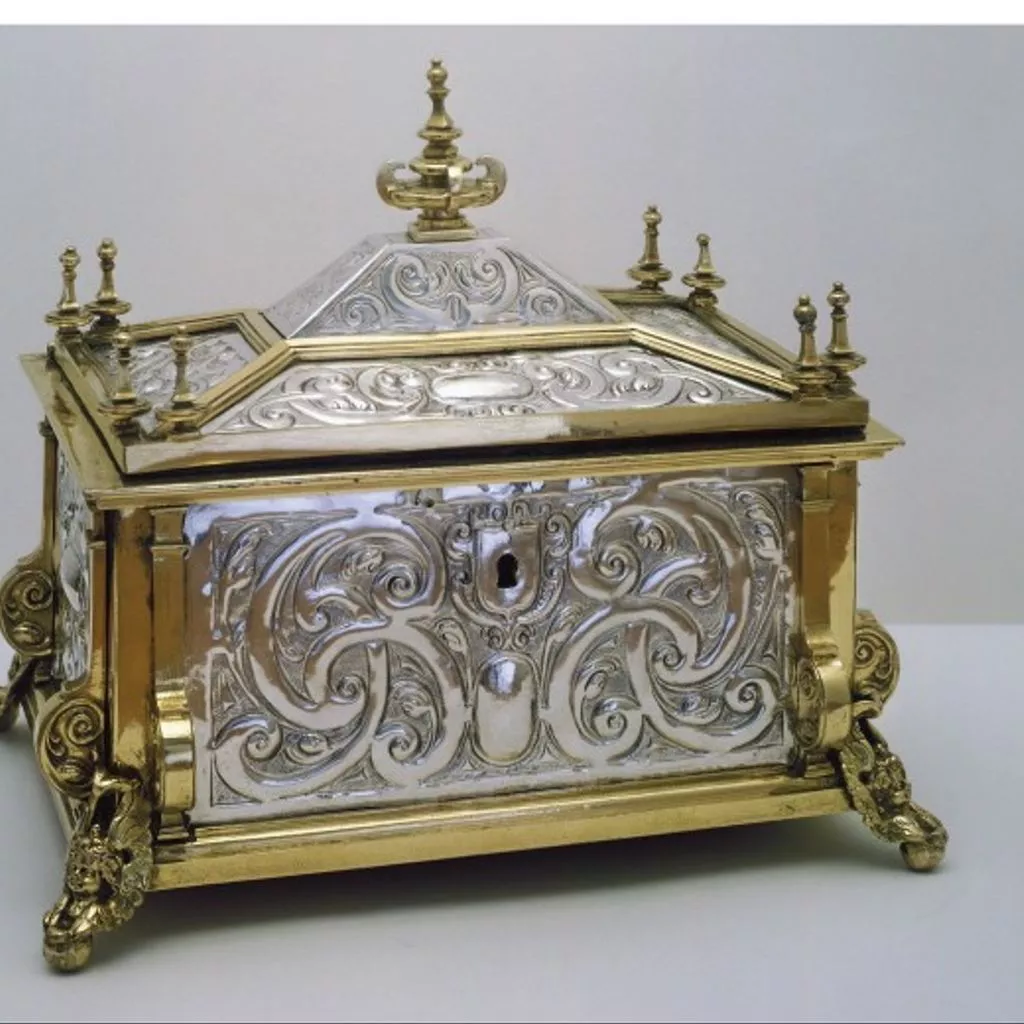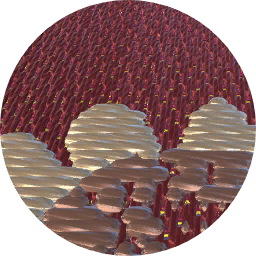Description
Rectangular casket, wooden core, silver panels, embossed strapwork, 4 ball feet joined to body by winged masks, lid with 8 pinnacles and finial, brass key, red cloth, gold trim interior, containing decorated cloth with IHS inscribed.
Casket with wooden core, silver panels, embossed strapwork, and embroidered floral silk cover, Spain, ca. 1630
Silver Gallery:
This casket with a wooden core and silver panels appears at first to be for everyday use. Its embossed strapwork, pinnacles, ball feet and winged cherub heads are all secular in character. Its function however was religious. Inside, the box has a red damask silk lining and a cloth of beige silk with a colourful floral embroidery and an IHS-monogram with three nails representing Christ's Passion. Such caskets were known to contain the Eucharist or relics. Some examples of this type have a lid surmounted by a cross. [26/11/2002]
This casket with a wooden core and silver panels appears at first to be for everyday use. Its embossed strapwork, pinnacles, ball feet and winged cherub heads are all secular in character. Its function however was religious. Inside, the box has a red damask silk lining and a cloth of beige silk with a colourful floral embroidery and an IHS-monogram with three nails representing Christ's Passion. Such caskets were known to contain the Eucharist or relics. Some examples of this type have a lid surmounted by a cross.





